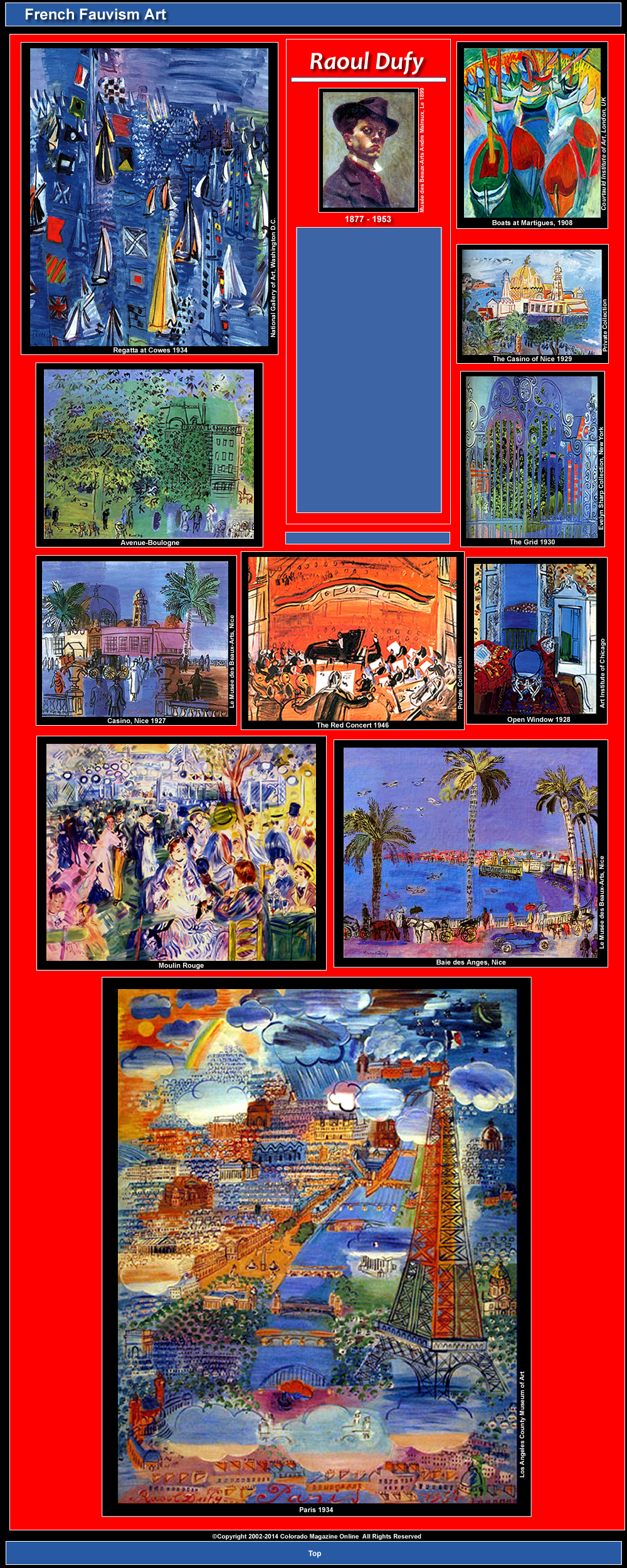

In 1900, Dufy moved to Paris with a scholarship to the École Nationale Supérieure des Beaux-Arts. There, Dufy's work was influenced by the work of a friend and classmate, Georges Braque, who became a major 20th-century French painter. Braque was known for his intricate cubist paintings, which were similar to those of his colleague Pablo Picasso. During this time, Dufy's work was also influenced by the impressionistic paintings of Claude Monet and Camille Pissarro.
Gaining recognition, Dufy's work was exhibited in 1902 at Berthe Weill’s gallery in Paris. She showcased many famous French artists, including Pablo Picasso and Henri Matisse in her gallery.
In 1903, Dufy's work was shown at the Salon des Indépendants, an annual independent art exhibition in Paris. The Salon des Indépendants was established in opposition to the rigid traditionalism of the official government-sponsored Salon. It was organized by a group of innovative artists, which included Paul Cézanne, Paul Gauguin, Henri de Toulouse-Lautrec, Camille Pissarro, and other artists, who wanted to present their work to the public without formal restrictions. Many of its members received international acclaim for their role in avant-garde art movements.
Dufy’s style changed dramatically, influenced by the Fauvism movement, which began in 1905 by members of the Salon des Indépendants. Fauvism, a French word meaning"the wild beasts," emphasized the use of bright colors and bold contouring lines. Dufy developed his own unique interpretation of that style and began creating lively compositions by incorporating quickly sketched calligraphic black lines filled with broad areas of bright color mixes, such as half-green and half-blue, which overlapped the lines. To earn a living during that time, Dufy worked on a museum staff illustrating books and designing fabrics.
Dufy's bright paintings captured lively scenes of Parisian and Riviera life and landscapes, including beach scenes, sail boats, casinos, and musical performances. His paintings also depicted French architecture, the Moulin Rouge, nudes and interior views of his own studio.
By 1925, Dufy had become an established painter, as well as a successful illustrator and commercial artist. In addition to his painting, he designed tapestries, fabrics and ceramics. He received commissions to paint murals for many public buildings in France, including a large fresco commissioned by the Paris Electricity Distribution Company for the 1937 World’s Fair.
Dufy began to suffer from multiple-arthritis in 1937, at which time, he moved to southwestern France for his health.
In the late 1940s and 1950s, Dufy's work was exhibited at the Salon des Tuileries in Paris, an annual art exhibition for painting and sculpture, which featured the works of major artists.
Dufy continued painting until his death on March 23, 1953, at the age 76. He was buried near Matisse, just outside of Nice.
web sources.